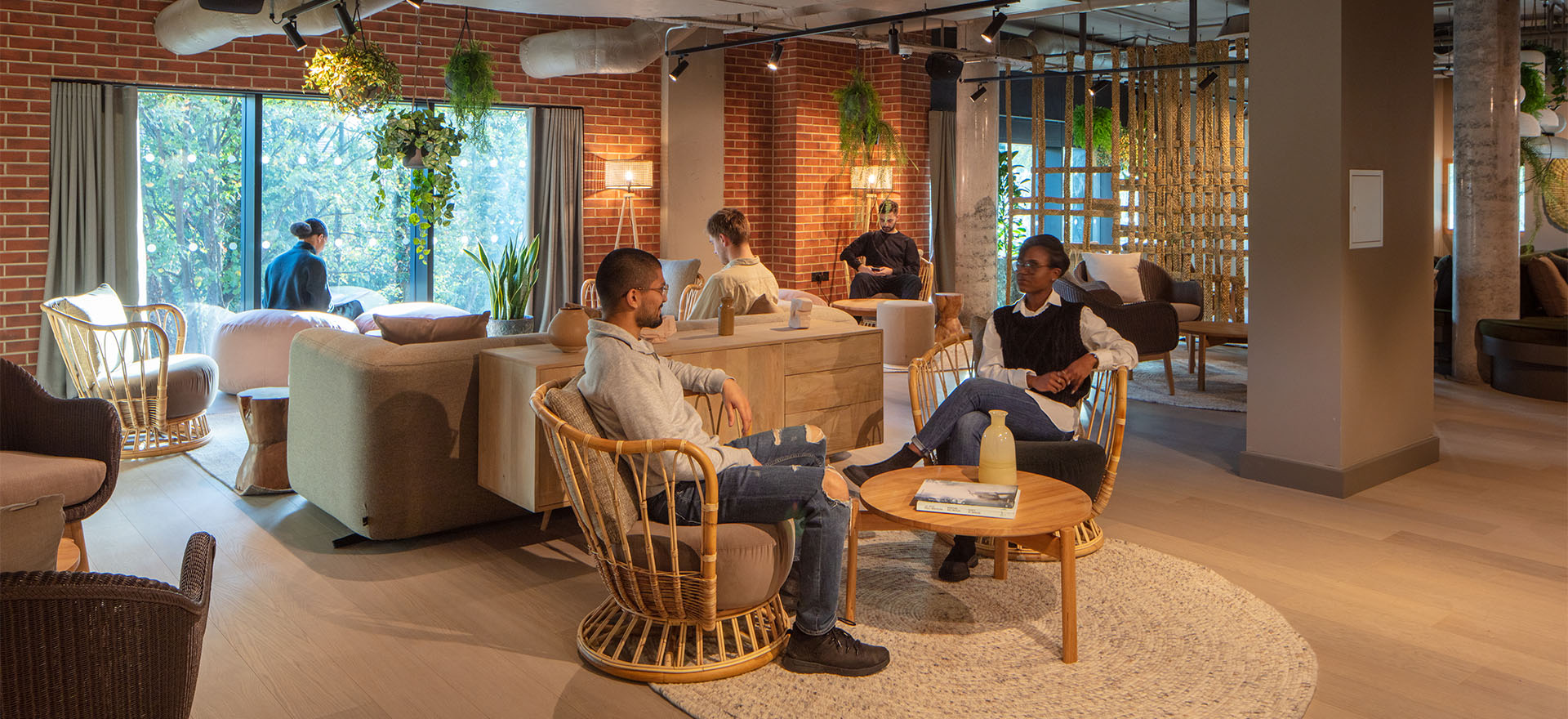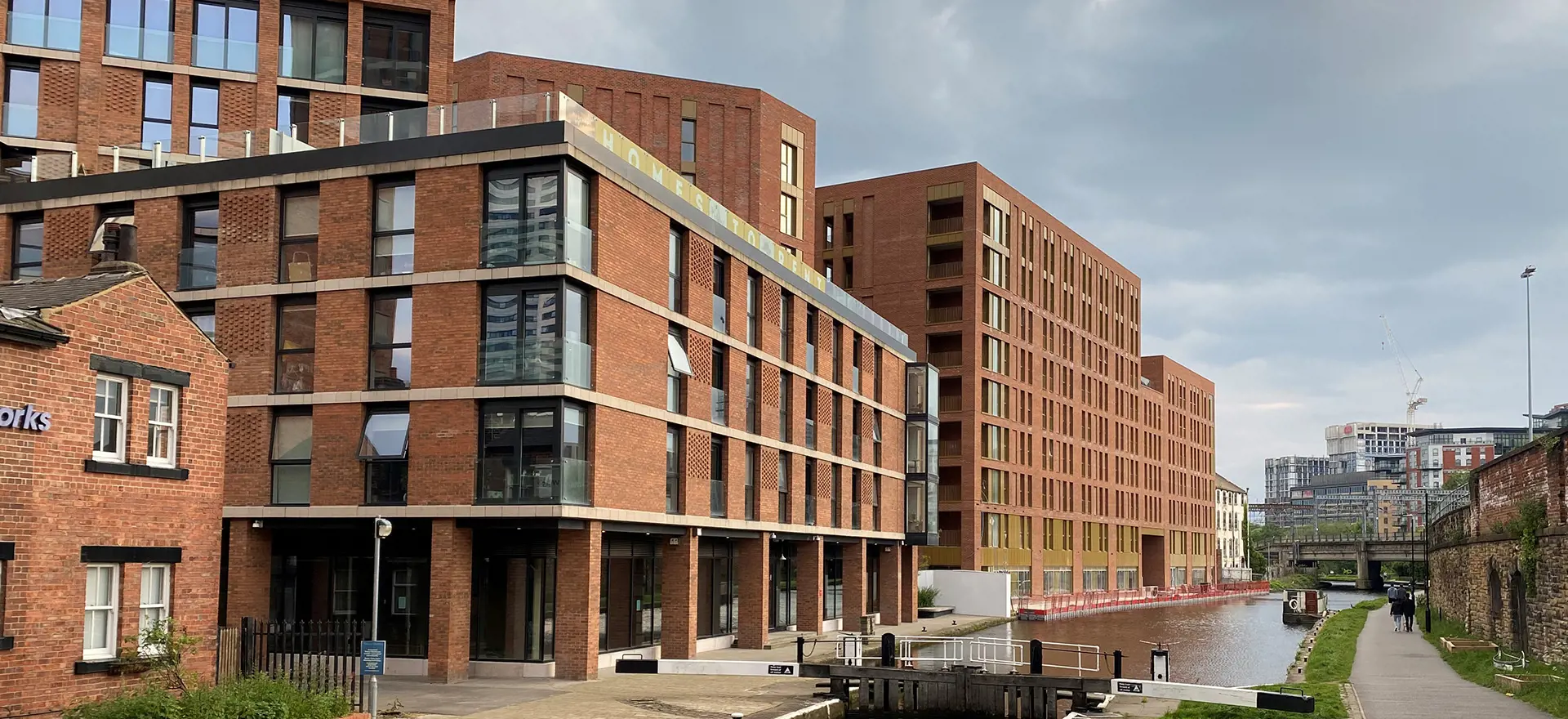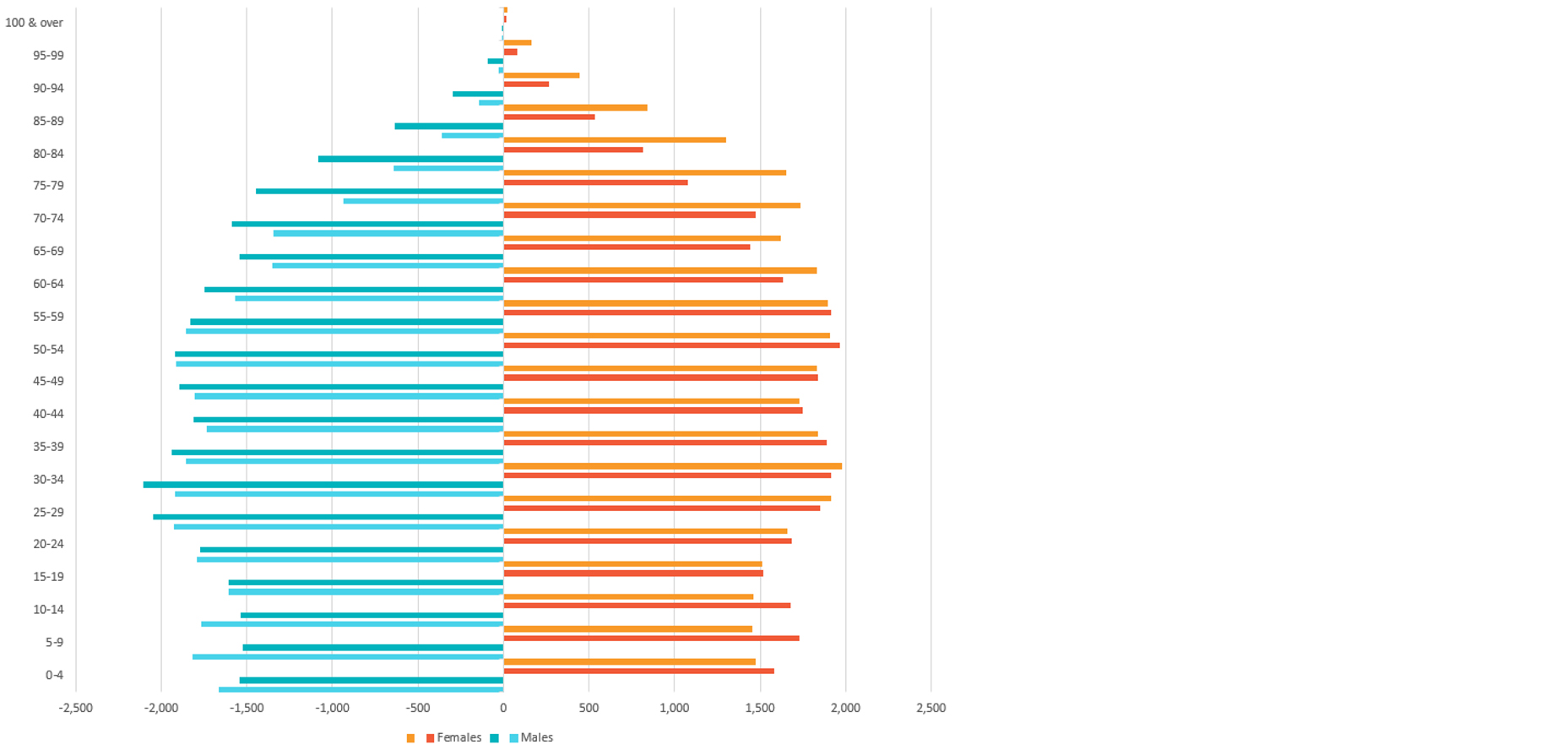This is the second of our blog series about town centre living and focuses on the potential of town and city centres to provide good homes across different age ranges and life stages. Today we will concentrate on build to rent (BtR) and older persons’ accommodation.
Changing demographics
Across the country, our town and city centres are changing and becoming increasingly attractive places to live, work and play (our first blog in this series looked at this in greater detail).
Notably, looking at the younger generations, one third of people aged between 20 and 29 now live in city centres, although they represent just 14% of the whole of England and Wales population (CapX, 2018
[1]).
At the other end of the age range, town and city centres also provide a lot of opportunities for older people which have not yet been maximised. Demographically, it is well documented that the UK has an ageing population and the number of people aged 65 and over is projected to increase faster than any other age cohort in future years (as shown in the chart below).
England Population Change 2020-2043
Source: ONS / Lichfields analysis
Planning policy is starting to recognise these pressures, although there is a long way to go. Planning Practice Guidance notes:
“The need to provide housing for older people is critical. People are living longer lives and the proportion of older people in the population is increasing. In mid-2016 there were 1.6 million people aged 85 and over; by mid-2041 this is projected to double to 3.2 million.” (Paragraph: 001 Reference ID: 63-001-20190626 Revision date: 26 June 2019) (Emphasis added).
The changing nature of town centre living
The Covid-19 pandemic has impacted housing markets across the board. The lockdown led to a surge of buyers and tenants seeking larger countryside or coastal properties. As services have re-opened, however, young professionals are now being drawn back by the “buzz” of city centre living
[2]. Rightmove (2022) has confirmed this trend, through an increase of rental enquiries in city centres since 2020. This has been particularly notable in Sheffield (102%), Manchester (69%), Leicester (68%), Derby (60%), Nottingham (58%), and Leeds and Coventry (55%).
However, the benefits of town centre living should apply equally to those of all ages. They are convenient places to live, supporting a wide range of accessible services and amenities. This is highly advantageous for residents, as they are often able to get around more easily to access the services they need and are not reliant on the private car. This can be particularly beneficial to people who may not have access to a car (typically younger and older generations).
Indeed, levels of car ownership are much lower in town and city centres (reflective of the high levels of accessibility), which is also beneficial from an environmental sustainability perspective. In addition, town and city centres are hubs for public transport, meaning that it is easier to get around.
Young at Heart
Perhaps unsurprisingly, levels of homeownership in city centres are low, with a high level of renting. Research shows that 30% of young people prefer renting
[3], as they appreciate the flexibility, including through forms of accommodation such as ‘co-living’. This could take the form of an apartment with multiple bedrooms or even single-person apartments where there are shared facilities and amenities. This concept is traditionally most attractive to younger people, helping to form and maintain a social life, reduce loneliness and offer cost savings to tenants through being able to share rent and utility costs. Indeed, some co-living providers include comprehensive utility bill packages – passing wholesale cost savings down to residents.
Co-living tenancies are often more flexible – allowing residents to take out tenancies for a period of six months to five years, for example. However, these benefits also apply to older people, which is why town and city centre living provides a key opportunity area.

Build-to-Rent and Co-living facilities typically provide high-quality living accommodation in accessible locations and are centrally managed. They have amenity spaces such as gyms, cinema rooms, co-working and social spaces and services such as concierges. Furthermore, building management often host social events on site which can be a great opportunity to meet other residents and build social connections. These additional services are a draw for many young professionals who appreciate the additional amenities that are included with their tenancies – for some it can save them money, meaning that they do not need to subscribe to an external gym membership for example. Centrally managed schemes can also make renting much simpler for tenants as they can deal directly with the accommodation provider rather than multiple agents, landlords and utility providers.
Town Centres – A golden opportunity for older persons’ accommodation?
Despite these clear benefits, generally speaking, housing for older people has traditionally been located at the edge of urban areas. However, this can lead to issues of isolation and there is increasingly an acknowledgement on the part of the sector that housing for older generations should focus upon community-based environments which integrate shopping experiences with social interaction, healthcare services, leisure activities and entertainment. Where better to provide these features than within our town centres?
[4]However, the challenge is identifying the most suitable and viable sites in town centres. The type of high-rise accommodation typically associated with Build-to-Rent schemes will rarely be suitable for older persons accommodation, which is typically lower rise and more ‘land hungry’ as a result.
In this context, opportunities for town centre living should enable older people to live close to facilities and amenities; benefit from shared living environments; and deliver a range of house type and tenure options.
If this can be delivered, research shows that older people living in town centres could also bring significant economic and regeneration benefits, given the over 65s spend £170 billion per annum, amounting to over a fifth (21%) of all household expenditure. This includes £14 billion of spending on restaurants and hotels, and close to £27 billion of spending on recreation & culture. Spending power is also forecast to grow by 81% by 2030
[5].
The role of the planning system
The planning system must provide the right framework to help drive forward both the reinvigoration of town centres and ensure enough of the right type of housing is provided for all demographics and sectors of society.
There is a general acceptance that Build-to-Rent schemes will be delivered as part of major urban centre regeneration projects. However, research undertaken by Lichfields
[6] shows that whilst most Local Plans in England, Wales and Scotland include a generic policy relating to the housing needs of older people, very few have a specific policy to address older peoples’ housing needs, allocate sites for housing for older people, or monitor the delivery of housing for older people. As the population continues to grow older, this is an issue which policy makers will need to grapple with.
In developing Local Plans, housing strategies and town centre strategies we must recognise the changing roles of our town centres and the opportunities this brings for good place-making. There is a very clear opportunity to plan for the future of town centres to incorporate more housing options generally and build upon the high levels of accessibility to every-day services and facilities. In particular, policy making authorities should be more responsive to creating housing options for older people; alongside younger people and other general housing needs.
However, the built environment needs to be right in order to facilitate these changes. We’ll look at this in more detail in the next blog in our series.
Image Credit: Folk at The Palm House, Halcyon Development Partners
[1] https://capx.co/people-want-to-live-in-town-centres-finally-the-go(Cvernment-is-letting-them
[2] https://www.buyassociation.co.uk/2021/04/01/city-centre-living-is-increasing-in-demand-as-lockdown-restrictions-ease
[3] https://www.centreforcities.org/publication/urban-demographics-2/
[4] Centre for Future Studies, 2017, p. 6
[5] https://www.arcouk.org/blog/reigniting-town-centres-and-high-streets-through-older-peoples-housing
[6] Solutions to an Age Old Problem – Planning for an ageing population - https://lichfields.uk/media/5104/solutions-to-an-age-old-problem_planning-for-an-ageing-population.pdf





 Build-to-Rent and Co-living facilities typically provide high-quality living accommodation in accessible locations and are centrally managed. They have amenity spaces such as gyms, cinema rooms, co-working and social spaces and services such as concierges. Furthermore, building management often host social events on site which can be a great opportunity to meet other residents and build social connections. These additional services are a draw for many young professionals who appreciate the additional amenities that are included with their tenancies – for some it can save them money, meaning that they do not need to subscribe to an external gym membership for example. Centrally managed schemes can also make renting much simpler for tenants as they can deal directly with the accommodation provider rather than multiple agents, landlords and utility providers.
Build-to-Rent and Co-living facilities typically provide high-quality living accommodation in accessible locations and are centrally managed. They have amenity spaces such as gyms, cinema rooms, co-working and social spaces and services such as concierges. Furthermore, building management often host social events on site which can be a great opportunity to meet other residents and build social connections. These additional services are a draw for many young professionals who appreciate the additional amenities that are included with their tenancies – for some it can save them money, meaning that they do not need to subscribe to an external gym membership for example. Centrally managed schemes can also make renting much simpler for tenants as they can deal directly with the accommodation provider rather than multiple agents, landlords and utility providers.